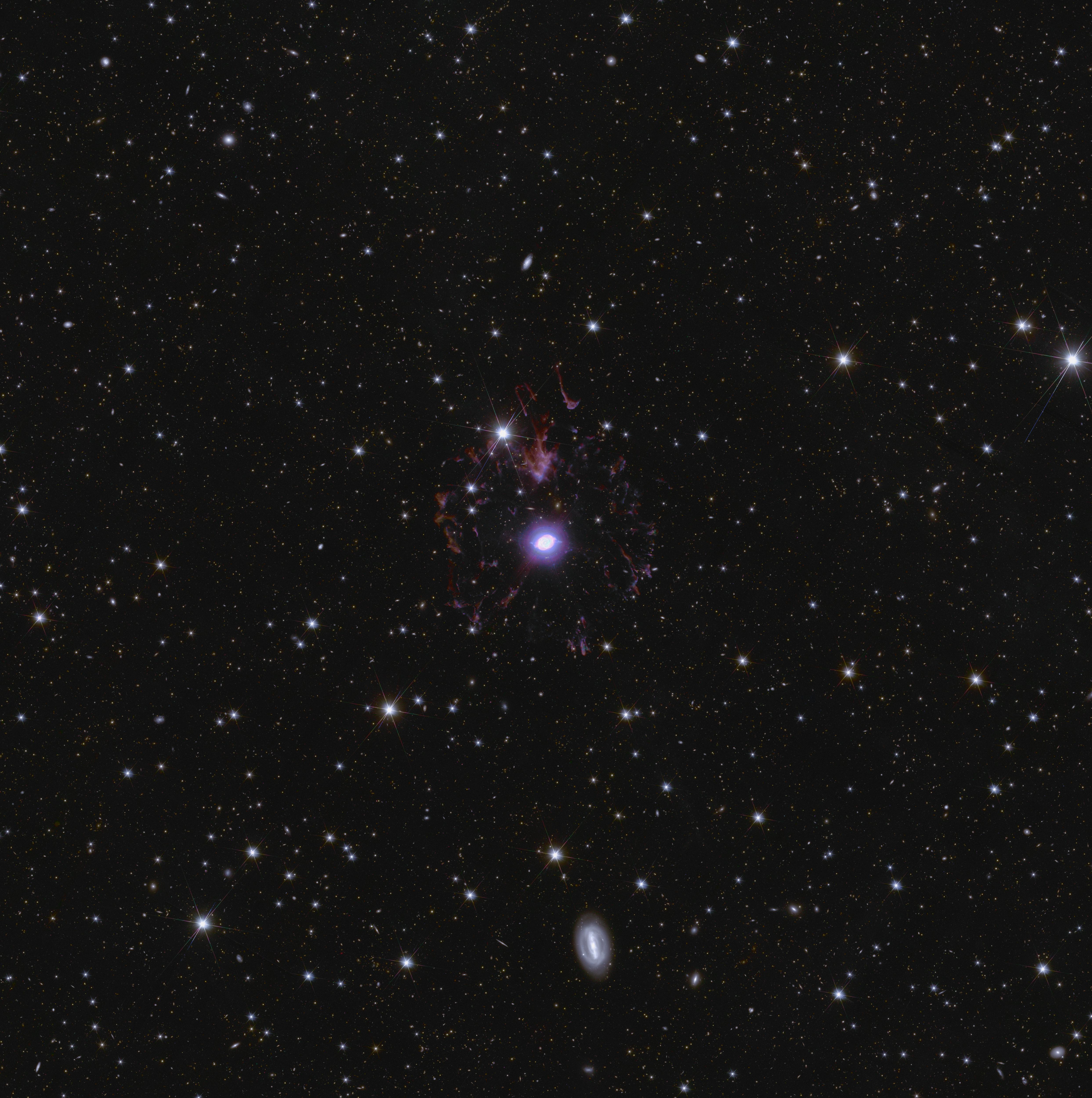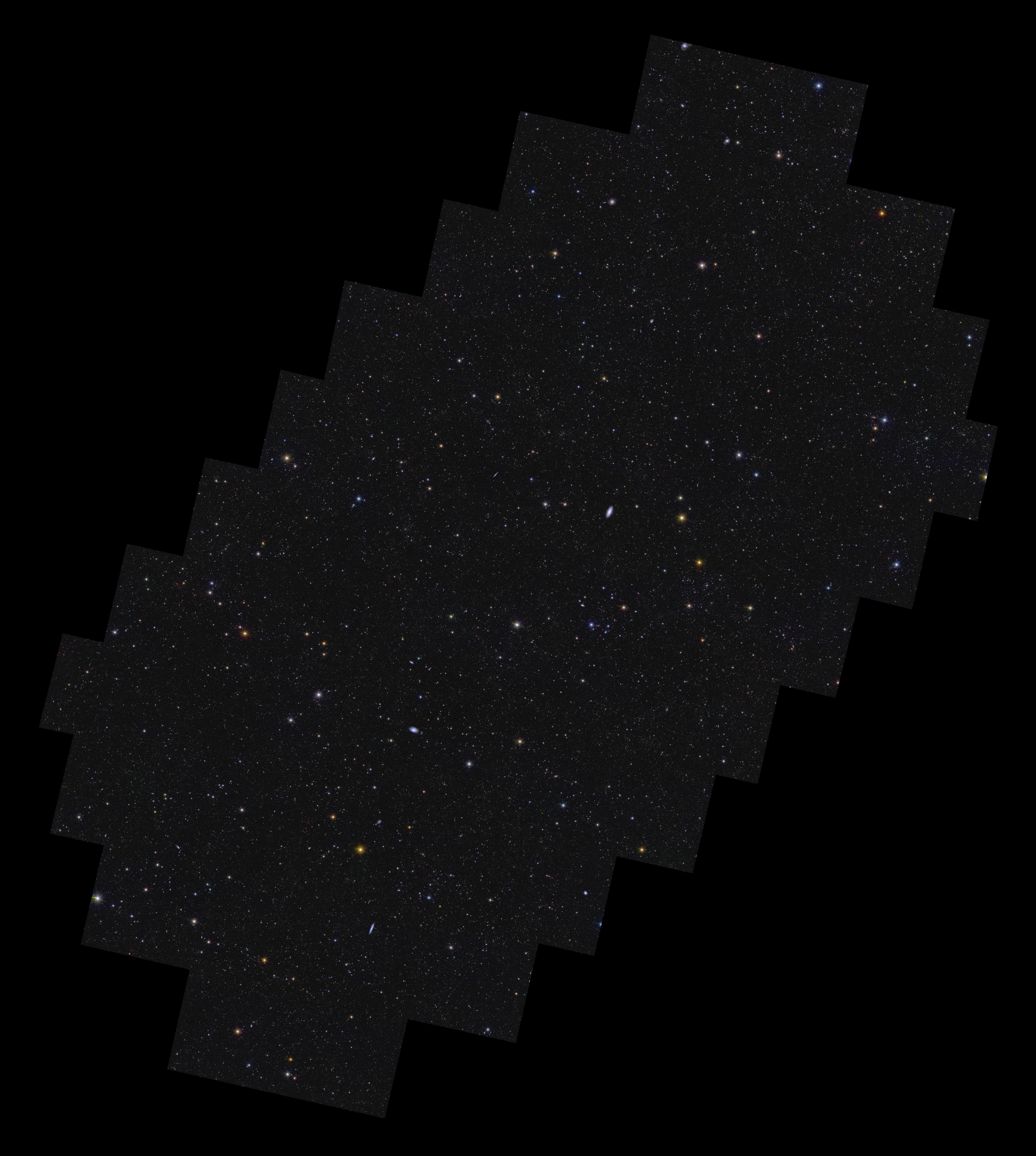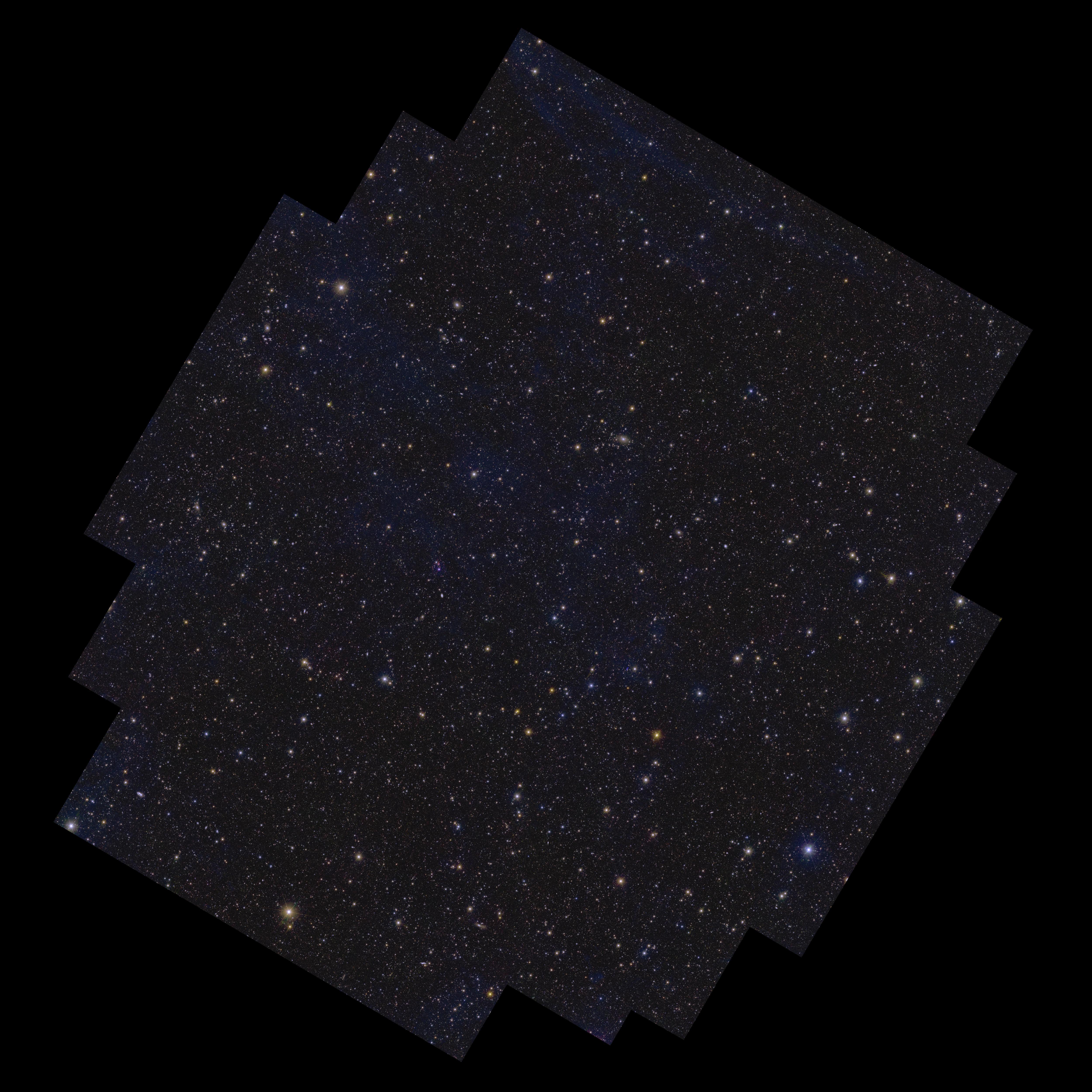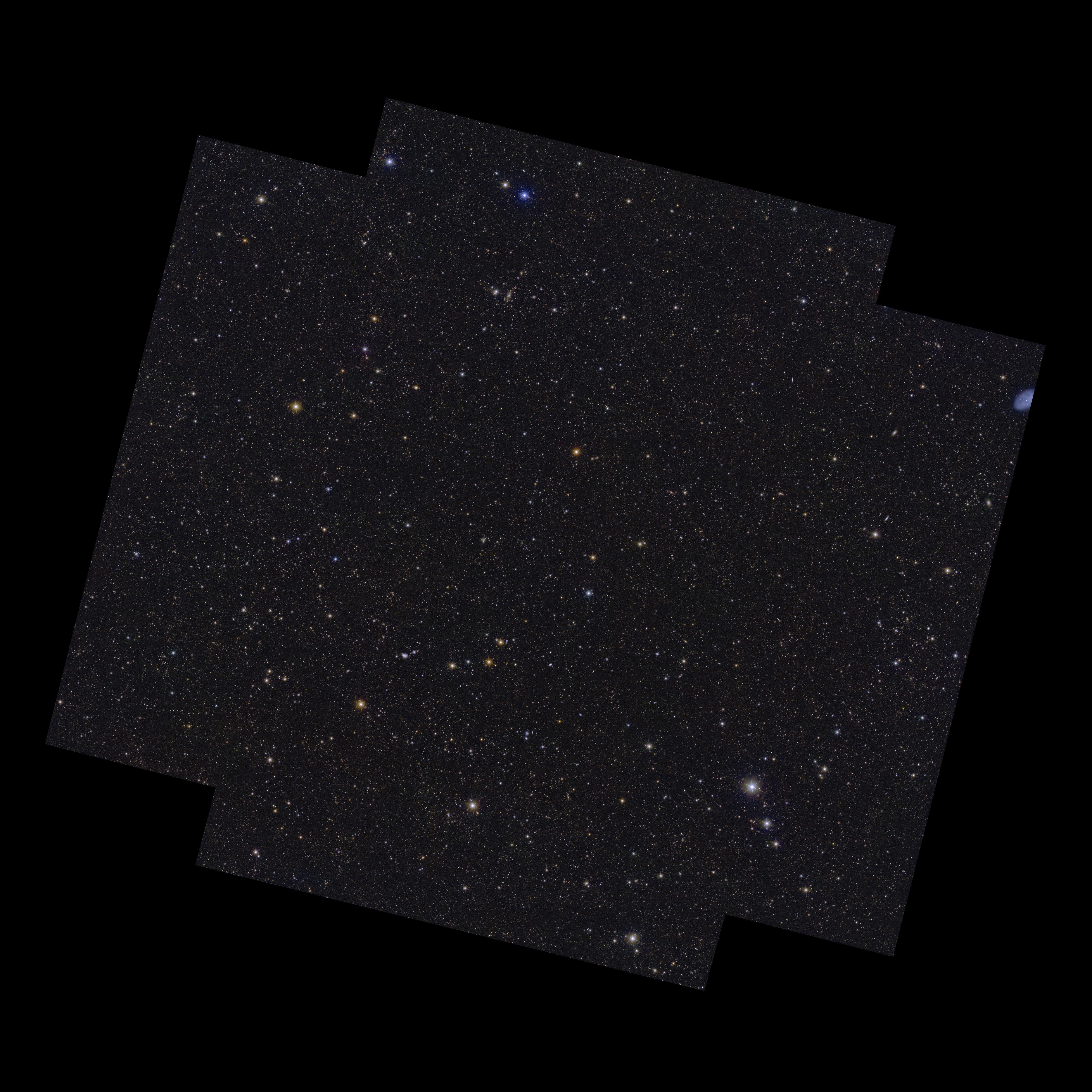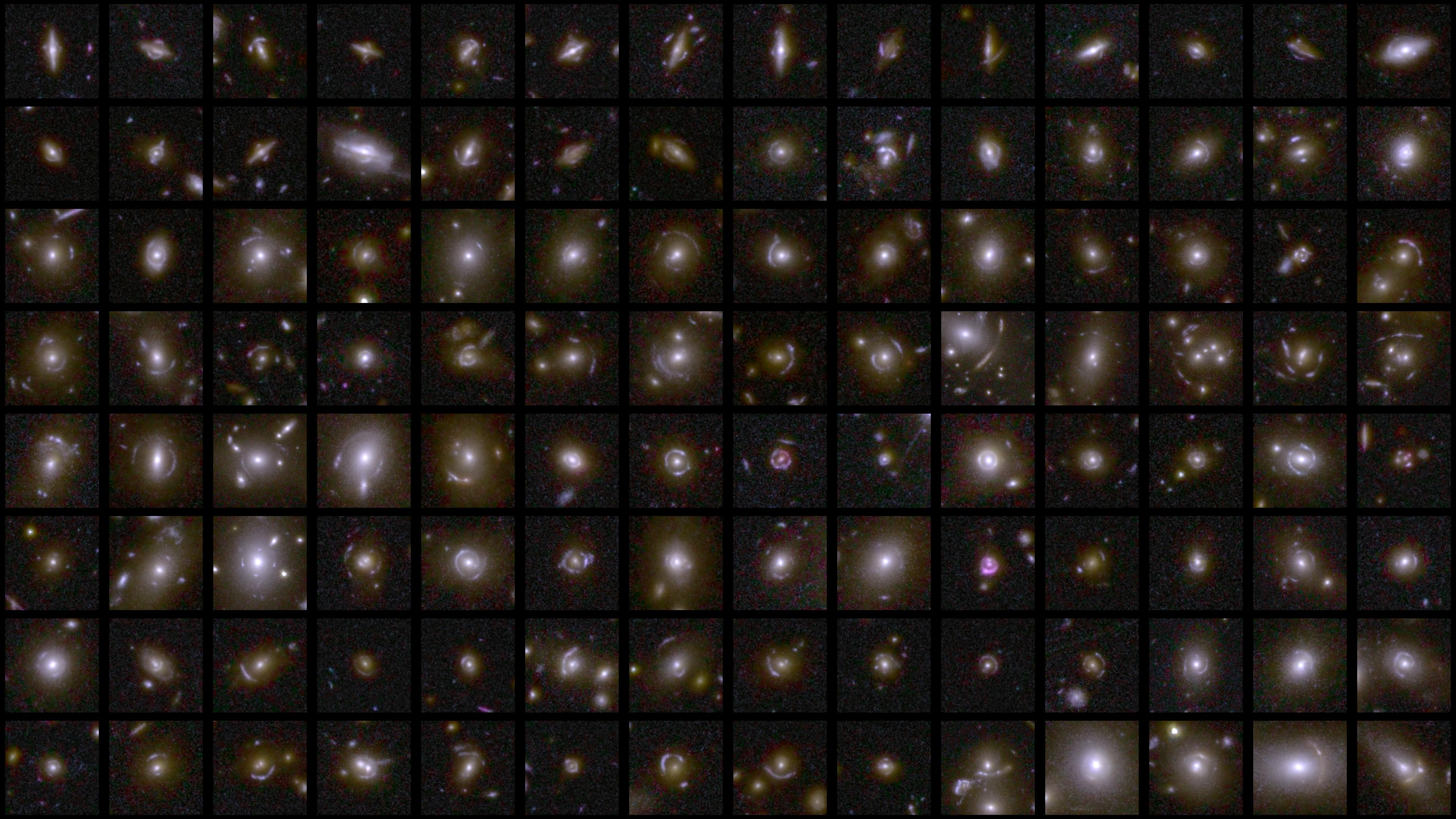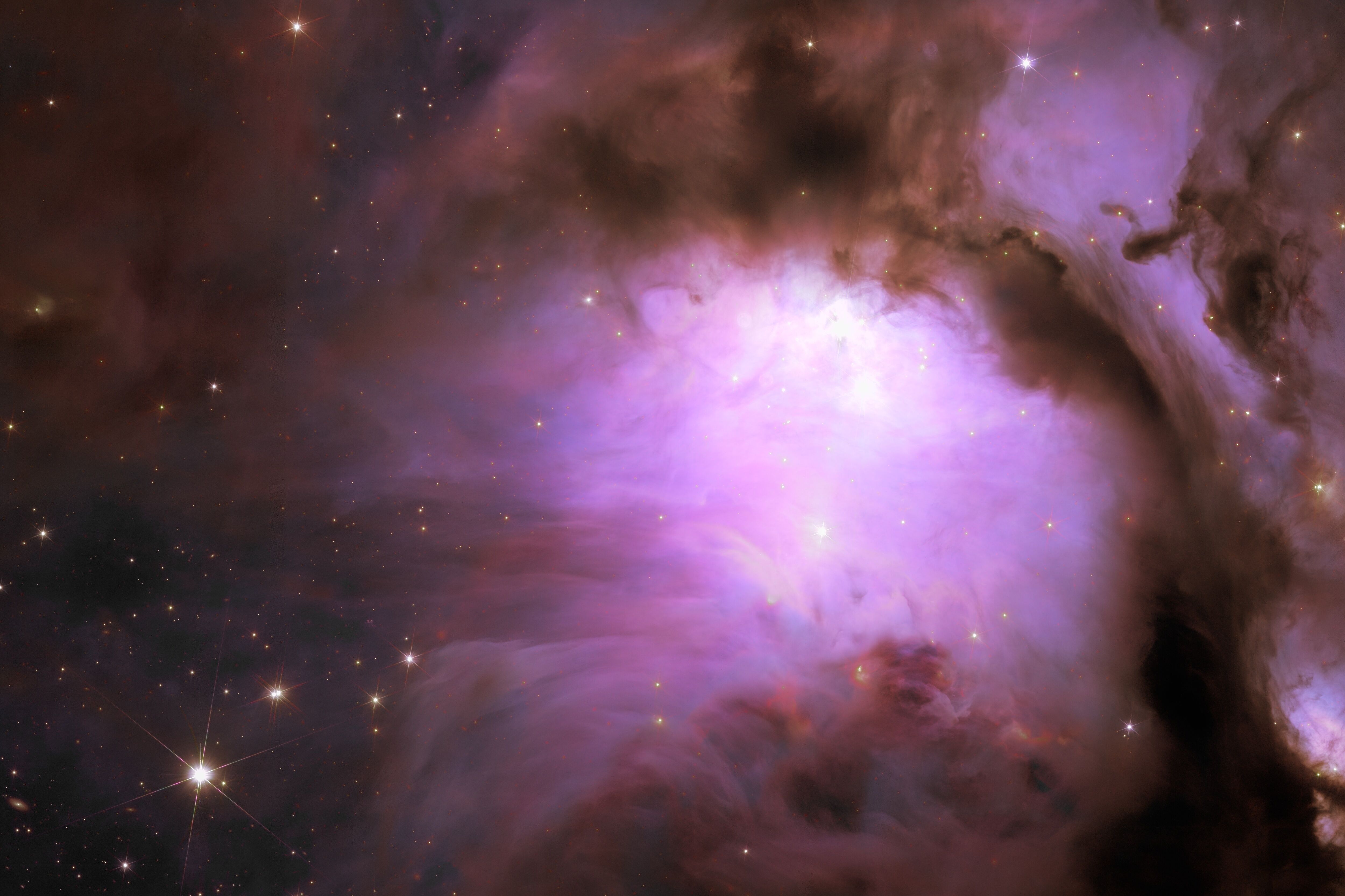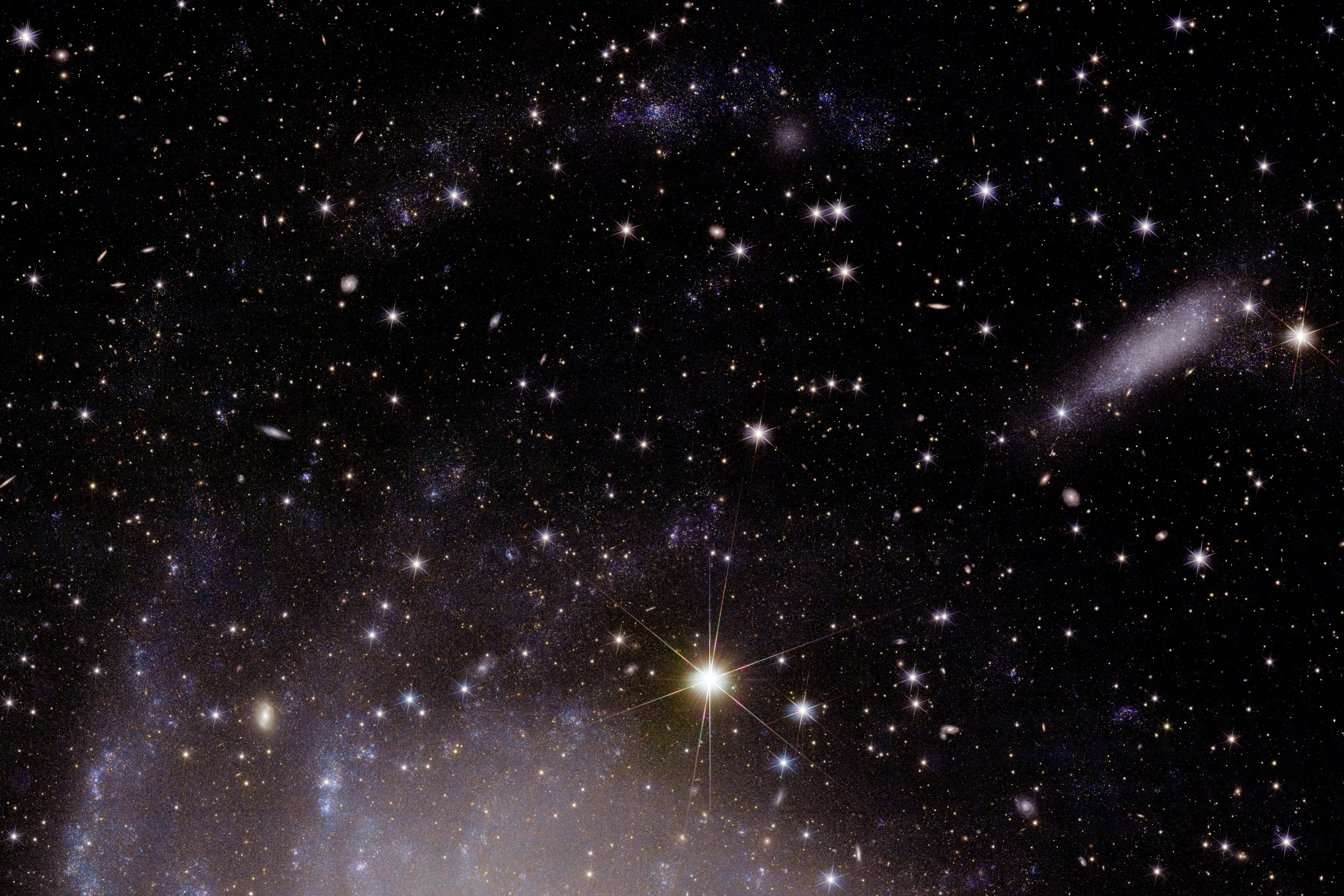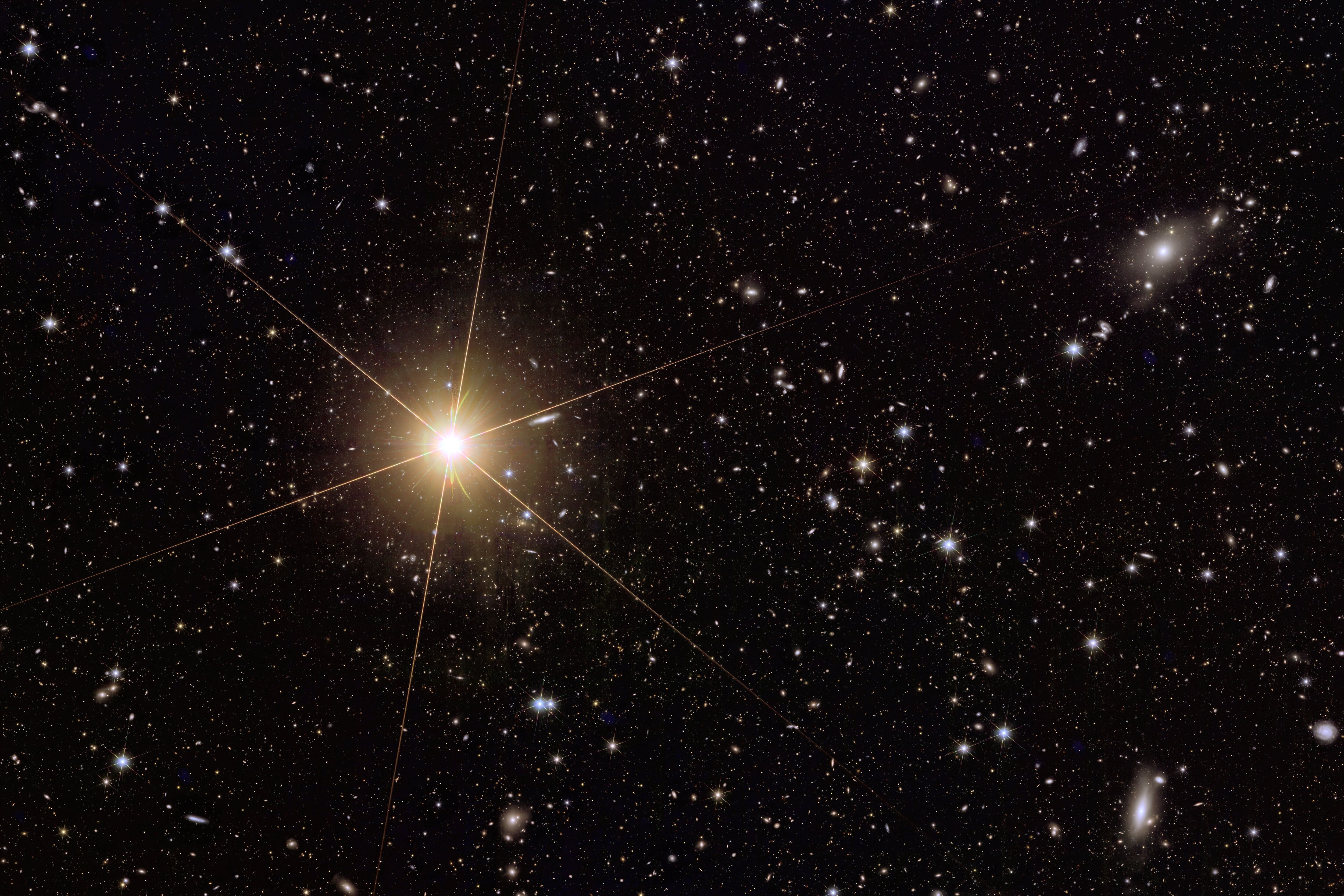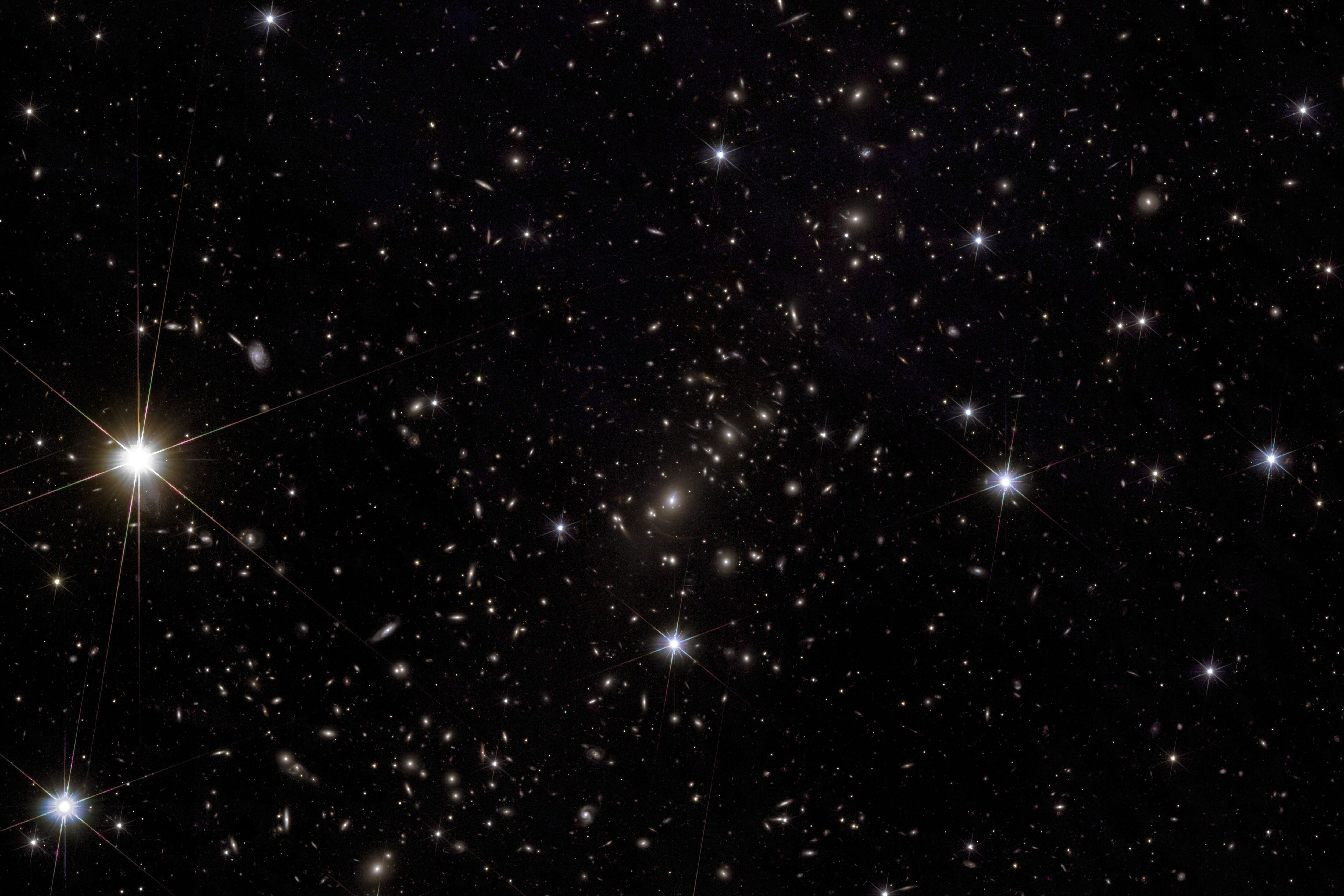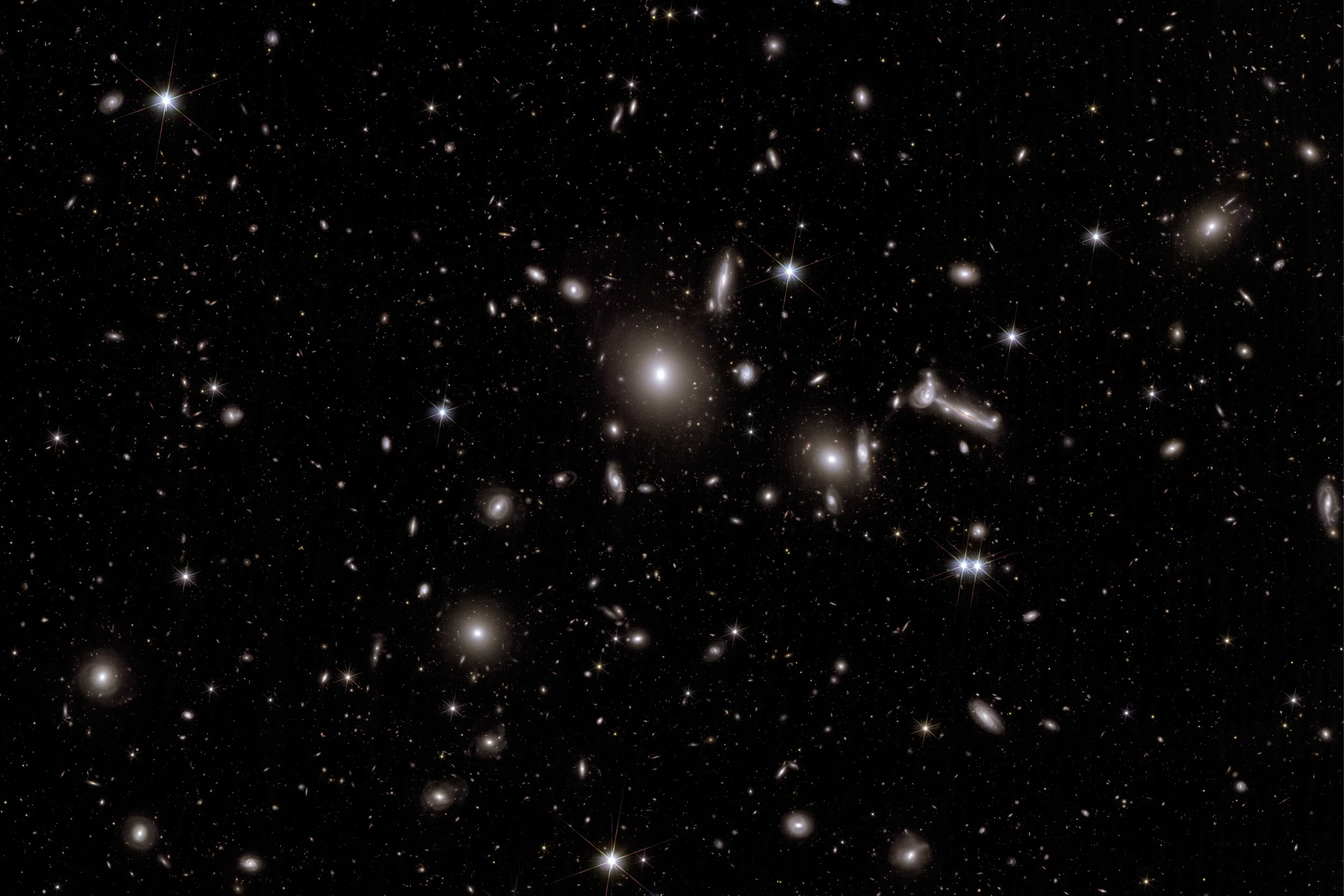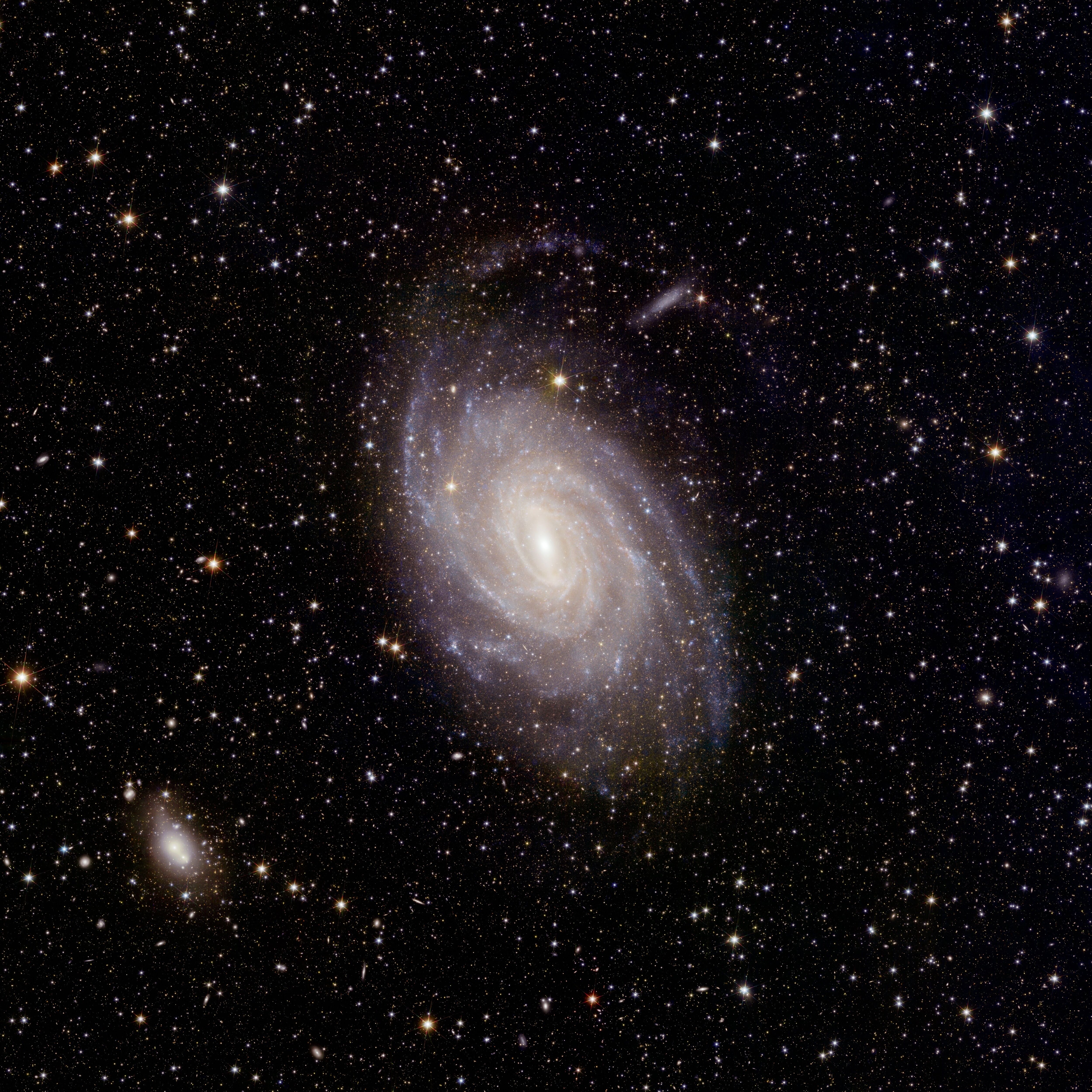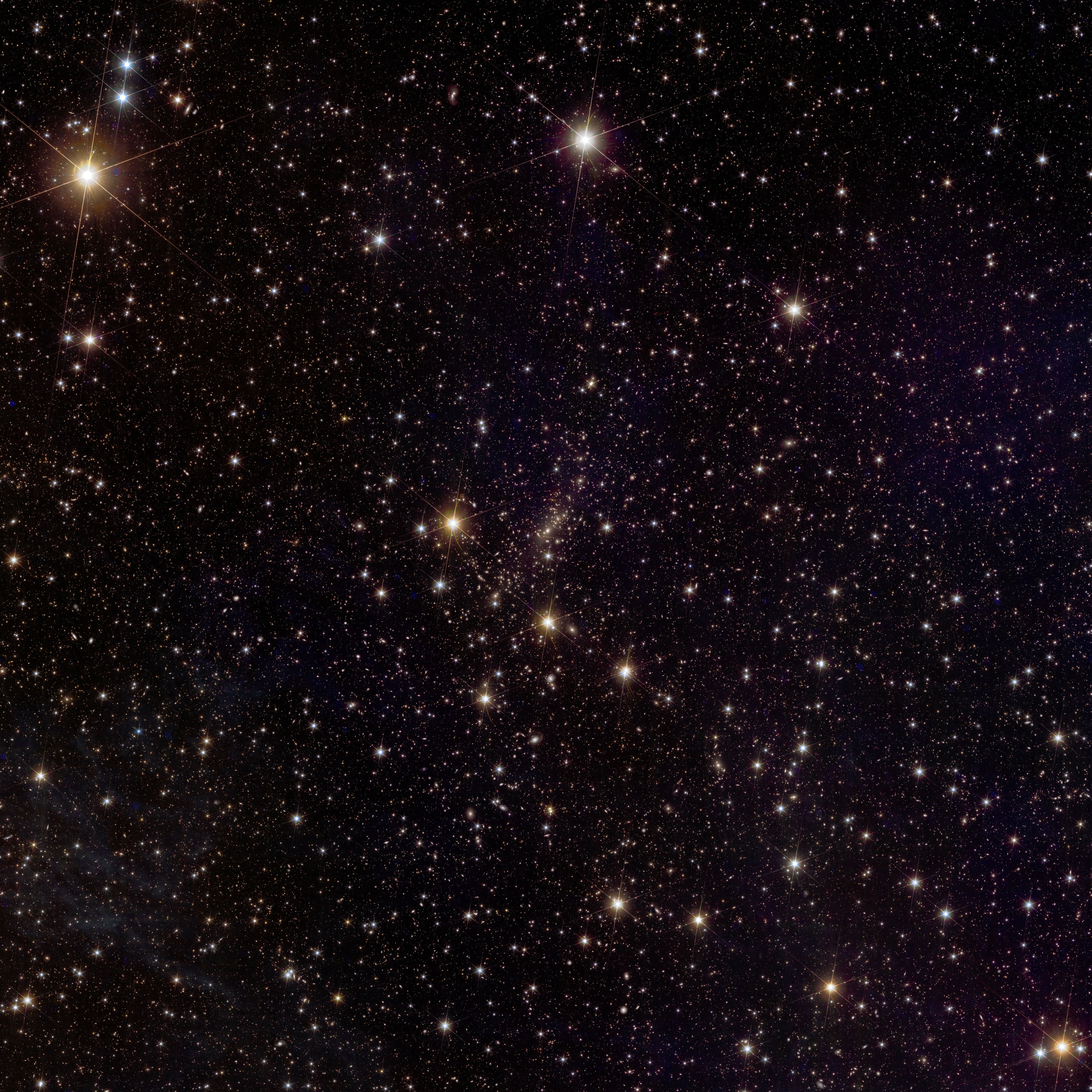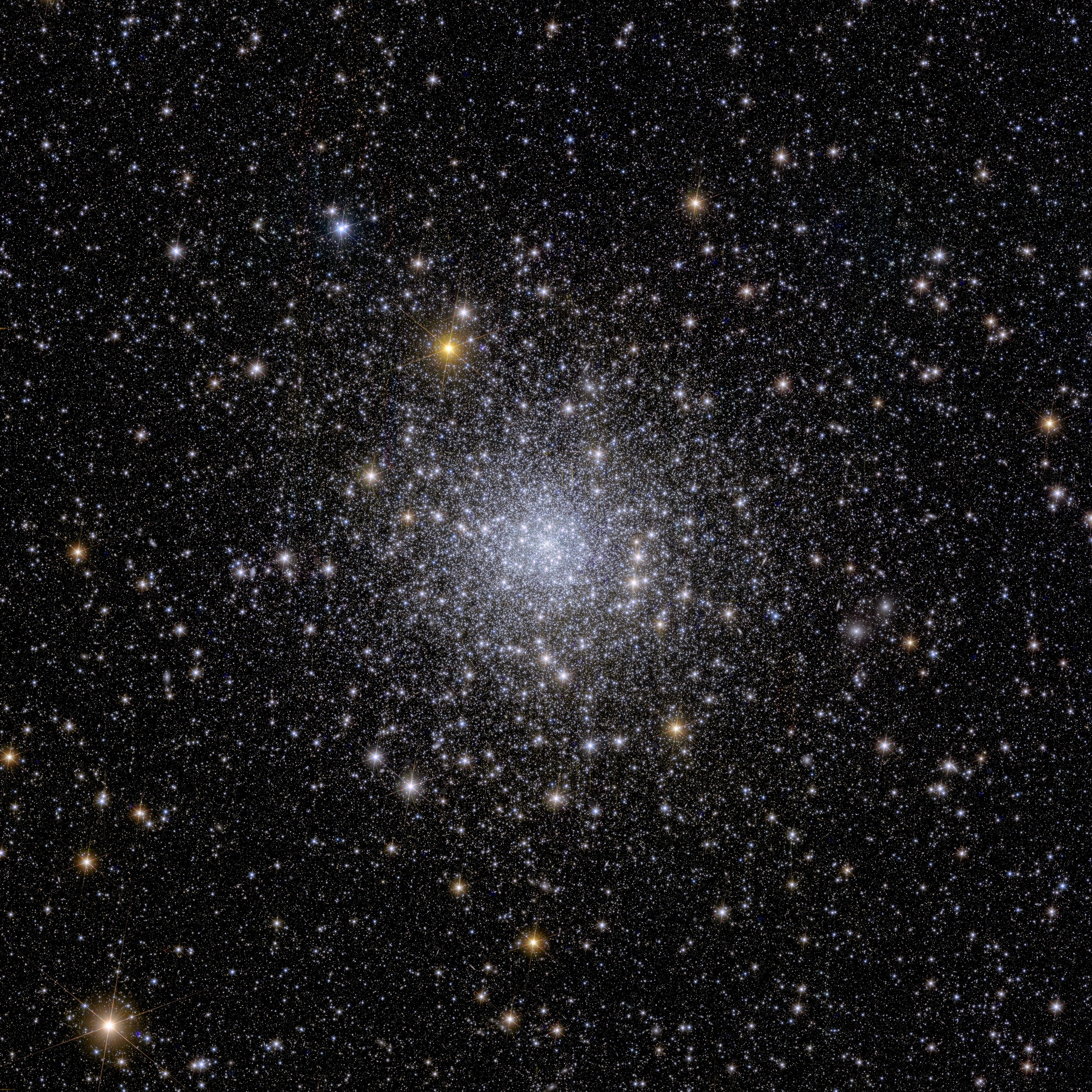
Euclid
Euclid’s view of globular cluster NGC 6397
Please sign in to download.
This sparkly image shows Euclid’s view on a globular cluster called NGC 6397. Globular clusters are collections of hundreds of thousands of stars held together by gravity. Located about 7800 light-years from Earth, NGC 6397 is the second-closest globular cluster to us. Together with other globular clusters it orbits in the disc of the Milky Way, where the majority of stars are located. Globular clusters are some of the oldest objects in the Universe. That’s why they contain a lot of clues about the history and evolution of their host galaxies, like this one for the Milky Way. The challenge is that it is typically difficult to observe an entire globular cluster in just one sitting. Their centres contain lots of stars, so many that the brightest ‘drown out’ the fainter ones. Their outer regions extend a long way out and contain mostly low-mass, faint stars. It is the faint stars that can tell us about previous interactions with the Milky Way. “Currently no other telescope than Euclid can observe the entire globular cluster and at the same time distinguish its faint stellar members in the outer regions from other cosmic sources,” explains Euclid Consortium scientist Davide Massari of the National Institute for Astrophysics in Italy. For example, Hubble has observed the core of NGC 6397 in detail, but it would take a lot of observing time with Hubble to map the outskirts of the cluster, something Euclid can do in just one hour. ESA’s Gaia mission can track the movement of globular clusters, but can’t tell what’s going on with very faint stars. And telescopes from the ground can cover a larger field, but with a poorer depth and resolution, so they can’t distinguish the faint outskirts entirely. Davide and his colleagues will use Euclid to search for ‘tidal tails’ in globular clusters: a tidal tail is a trail of stars that extends far beyond the cluster because of a previous interaction with a galaxy. “We expect all of the globular clusters in the Milky Way to have them, but so far we have only seen them around just a few,” says Davide. “If there are no tidal tails, then there could be a dark matter halo around the globular cluster, preventing the outer stars from escaping. But we don’t expect dark matter haloes around smaller-scale objects like globular clusters, only around bigger structures like dwarf galaxies or the Milky Way itself.” If Davide and his team find tidal tails for NGC 6397 and other globular clusters in the Milky Way, that would allow them to very precisely calculate how the clusters orbit our galaxy. “And this will tell us how dark matter is distributed in the Milky Way,” Davide adds. With Euclid’s observations, the team also wants to determine the age of globular clusters, to investigate the chemical properties of their stellar populations, and to study ultra-cool dwarf stars – the lowest mass members of the cluster. [TECHNICAL DETAILS OF IMAGE] The data in this image were taken in about one hour of observation. This colour image was obtained by combining VIS data and NISP photometry in Y and H bands; its size is 8800 x 8800 pixels. VIS and NISP enable observing astronomical sources in four different wavelength ranges. Aesthetics choices led to the selection of three out of these four bands to be cast onto the traditional Red-Green-Blue colour channels used to represent images on our digital screens (RGB). The blue, green, red channels capture the Universe seen by Euclid around the wavelength 0.7, 1.1, and 1.7 micron respectively. This gives Euclid a distinctive colour palette: hot stars have a white-blue hue, excited hydrogen gas appears in the blue channel, and regions rich in dust and molecular gas have a clear red hue. Distant redshifted background galaxies appear very red. In the image, the stars have six prominent spikes due to how light interacts with the optical system of the telescope in the process of diffraction. Another signature of Euclid special optics is the presence of a few, very faint and small round regions of a fuzzy blue colour. These are normal artefacts of complex optical systems, so-called ‘optical ghost’; easily identifiable during data analysis, they do not cause any problem for the science goals. The cutout from the full view of NGC 6397 is at the high resolution of the VIS instrument. This is nine times better than the definition of NISP that was selected for the full view; this was done for the practical reason of limiting the format of the full image to a manageable size for downloading. The cutout fully showcases the power of Euclid in obtaining extremely sharp images over a large region of the sky in one single pointing. Although this image represents only a small part of the entire colour view, the same quality as shown here is available over the full field. The full view of NGC 6397 at the highest definition can be explored on ESASky. [Image description] This square astronomical image is speckled with hundreds of thousands of stars visible across the black expanse of space. The stars vary in size and colour, from blue to white to yellow/red. Blue stars are younger and red stars are older. More stars are located at the centre of the image, where they are bound together by gravity into a spheroid conglomeration – also called a globular cluster. Some of the stars are a bit larger than the rest, with six diffraction spikes. IMAGE CREDIT: ESA/Euclid/Euclid Consortium/NASA, image processing by J.-C. Cuillandre (CEA Paris-Saclay), G. Anselmi; CC BY-SA 3.0 IGO
